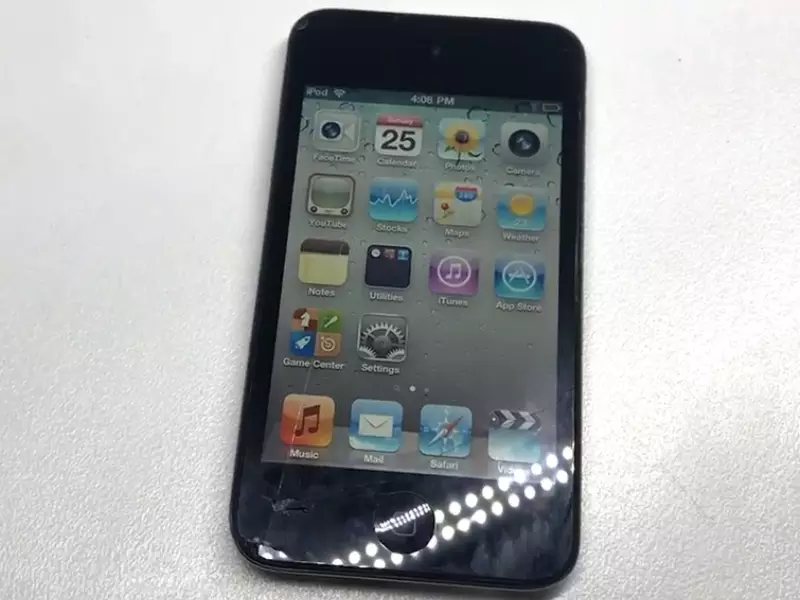The evolution of Apple’s iOS from version 4.2 through 4.3 marks a significant phase in mobile operating systems, bringing pivotal changes that enhanced user experience, security, and performance. Each version increment, although seemingly minor, introduced functionalities that set the stage for future developments. This journey from iOS 4.2 to 4.3 encapsulates the essence of technological advancement within Apple’s ecosystem, highlighting the company’s commitment to innovation and user satisfaction.
The difference between Apple iOS 4.2, 4.2.1, and 4.3 primarily lies in the introduction of new features, performance enhancements, and security updates. iOS 4.2 brought multitasking to the iPad, AirPrint, and AirPlay. The 4.2.1 update was a minor revision addressing bugs and improving performance. iOS 4.3 introduced Home Sharing, improved AirPlay, and faster Safari performance, marking a significant leap in functionality and user experience.
Focusing on these updates, iOS 4.2 made the iPad a more versatile tool for productivity and entertainment, while 4.2.1 ensured a smoother experience across devices. iOS 4.3, however, was a game-changer, significantly enhancing web browsing speed with the Nitro JavaScript engine and expanding the AirPlay feature to include third-party apps, making it a substantial upgrade over its predecessors.

iOS 4.2 Overview
Release Highlights
The launch of iOS 4.2 was a pivotal moment for Apple and its user base, marking the first time the iPad could enjoy the multitasking capabilities previously available only on the iPhone and iPod Touch. This update unified Apple’s mobile platform, ensuring all devices ran on the same version, enhancing compatibility and user experience.
Key Features Introduced
iOS 4.2 brought several key features to the table:
- Multitasking for iPad: Users could now run multiple apps simultaneously, switching between them seamlessly.
- Folders on iPad: Organizing apps into folders became possible, allowing for a cleaner Home Screen.
- AirPrint: This feature enabled direct printing from iOS devices to compatible printers without the need for drivers.
- AirPlay: Streaming multimedia content from an iOS device to Apple TV or compatible speakers was introduced.
iOS 4.2.1 Highlights
Purpose of the Update
iOS 4.2.1 was primarily released to address various bugs and performance issues found in 4.2. It was a minor update but crucial for improving system stability and user experience.
Improvements Over 4.2
The 4.2.1 update enhanced the overall performance and fixed specific bugs related to:
- Wi-Fi connectivity
- Battery life on various devices
- Document sharing through third-party apps
iOS 4.3 Introduction
Significance of the Upgrade
iOS 4.3 represented a significant upgrade over its predecessors, introducing features that would define the iOS experience for years to come. It focused on enhancing speed, connectivity, and multimedia sharing, catering to the growing demands of a connected, media-centric user base.
Major New Features
Some of the standout features of iOS 4.3 included:
- Personal Hotspot: Share your iPhone’s cellular data connection with other devices.
- Improved Safari Performance: Introduction of the Nitro JavaScript engine made Safari significantly faster.
- Home Sharing: Stream content from your iTunes library to your iOS device over Wi-Fi.
- AirPlay Enhancements: Expanded functionality for streaming video to Apple TV.
Feature Comparison
Multitasking Enhancements
Multitasking saw a significant evolution from iOS 4.2 to 4.3, with the latter refining the user interface and making the switch between apps smoother and more intuitive.
AirPlay Updates
AirPlay underwent notable changes:
- iOS 4.2 introduced the feature, allowing streaming of audio and video to Apple TV.
- iOS 4.3 expanded AirPlay functionality, enabling users to stream content from third-party apps and websites, offering a more integrated multimedia experience.
Safari Performance
The Nitro JavaScript engine in iOS 4.3 marked a leap in Safari’s performance, making web browsing:
- Faster
- More efficient
- Significantly more responsive
Home Sharing
Introduced in iOS 4.3, Home Sharing was a game-changer for multimedia consumption, allowing users to:
- Access their iTunes library across devices on the same network
- Stream music, movies, and TV shows without storing them on the device

Compatibility
Supported Devices for Each Version
The iOS updates from 4.2 to 4.3 marked significant shifts not only in features but also in device compatibility, which is crucial for both users and developers.
- iOS 4.2 was compatible with iPhone 3G onwards, including the first-generation iPad and iPod touch 3rd generation and later. This wide range ensured a substantial user base could benefit from the new multitasking capabilities and AirPrint functionalities.
- With the introduction of iOS 4.2.1, compatibility remained the same, focusing on enhancing the user experience through stability and performance fixes without altering the device support list.
- iOS 4.3 narrowed the compatibility slightly, dropping support for the iPhone 3G and iPod touch 2nd generation. It supported iPhone 3GS, iPhone 4, both iPad 1 and 2, and iPod touch 3rd generation and newer. This decision was likely due to the advanced features and performance requirements of the update.
Impact on App Compatibility
Each iOS update influences app compatibility, pushing developers to adapt to the new software environments.
- Developers had to update their apps to support the multitasking features introduced in iOS 4.2, ensuring smooth operation in the background without draining battery life or affecting performance.
- The introduction of AirPlay and AirPrint required developers to integrate these functionalities into their apps for a seamless user experience.
- With iOS 4.3, the enhanced AirPlay features and Home Sharing necessitated further app updates, especially for multimedia applications, to utilize these new streaming capabilities.
Performance and Stability
Comparative Analysis of System Stability
The transition from iOS 4.2 through 4.3 saw noticeable improvements in system stability and performance, addressing many of the bugs and issues that were present in earlier versions.
- iOS 4.2.1 was particularly focused on bug fixes, improving Wi-Fi connectivity and battery life, which directly impacted the stability of the devices.
- iOS 4.3 continued this trend with further optimizations, notably through the introduction of the Nitro JavaScript engine in Safari, which not only enhanced browser performance but also contributed to overall system stability by optimizing resource usage.
User Experience Improvements
The user experience was significantly improved across these versions, with Apple focusing on making the iOS platform more intuitive, faster, and more responsive.
- The multitasking feature was refined, allowing users to switch between apps more smoothly, enhancing the perception of speed and efficiency.
- AirPlay and Home Sharing introduced in these updates transformed how users interacted with media, offering more flexibility and options for content consumption across Apple devices.
Security Updates
Overview of Security Enhancements
Security is a cornerstone of Apple’s ecosystem, with each iOS update bringing enhancements to protect users from emerging threats.
- iOS 4.2 and 4.2.1 included several security patches that addressed vulnerabilities, ranging from Wi-Fi security flaws to potential methods for malicious code execution.
- iOS 4.3 further bolstered security with additional patches for Safari, protecting against phishing attacks and securing web browsing.
Importance for Users
The importance of these security updates cannot be overstated. They not only protect personal data but also ensure that the device operates securely within an increasingly threat-prone digital environment.
- For users, staying updated with the latest iOS version is crucial for safeguarding their data and privacy. These updates contain fixes for vulnerabilities that could be exploited by attackers to gain unauthorized access to devices.
- Developers must also pay attention to these updates, ensuring their apps are compatible and utilize the latest security protocols to protect user data.
Frequently Asked Questions
What is AirPlay and how did it change?
AirPlay, introduced by Apple, allows wireless streaming of audio, video, and photos along with related metadata between devices. From iOS 4.2 to 4.3, AirPlay received significant updates, expanding its functionality to include streaming from third-party apps and websites, not just Apple’s own apps, thereby enhancing the user’s multimedia experience.
How did Safari performance improve in iOS 4.3?
iOS 4.3 introduced the Nitro JavaScript engine to Safari, significantly accelerating its performance. This improvement meant faster browsing speeds, quicker page loads, and a more responsive interface, providing a substantially better web experience for users across all supported devices.
What is Home Sharing in iOS 4.3?
Home Sharing, introduced in iOS 4.3, allows users to stream or transfer music, movies, and TV shows from their iTunes library on a computer to their iOS device over a shared Wi-Fi network. This feature made it easier for users to access their media content on the go without occupying storage space on their devices.
Were there any major security updates in these versions?
Yes, each iOS update from 4.2 through 4.3 included significant security updates aimed at protecting users from emerging threats. These updates addressed vulnerabilities that could potentially allow unauthorized access to user data or compromise device integrity, ensuring a safer and more secure environment for iOS users.
Conclusion
The transition from iOS 4.2 through 4.3 represents a critical period in the evolution of Apple’s mobile operating system, characterized by substantial improvements in functionality, performance, and security. These updates not only enhanced the overall user experience but also laid the groundwork for future innovations within the iOS ecosystem.
Reflecting on these changes, it’s clear that Apple’s incremental updates to iOS during this period were driven by a commitment to providing users with a more powerful, efficient, and secure platform. The advancements introduced in versions 4.2, 4.2.1, and 4.3 underscore the importance of continuous improvement and adaptation in the fast-paced world of technology, ensuring that users always have access to the latest features and protections.
